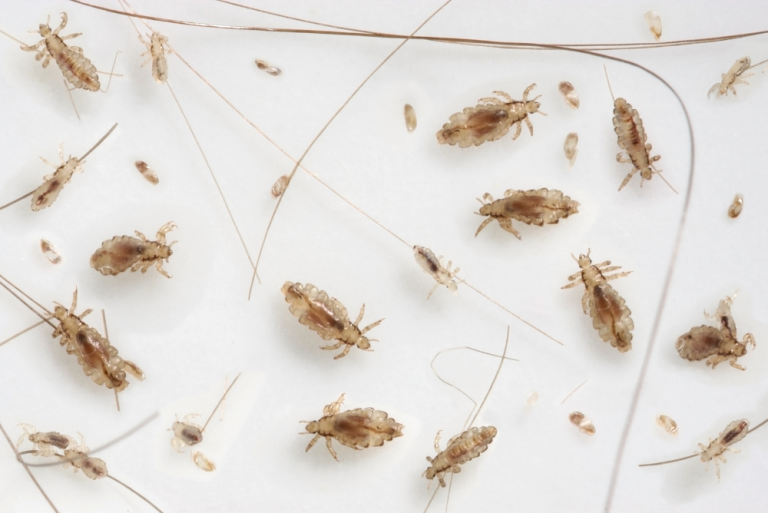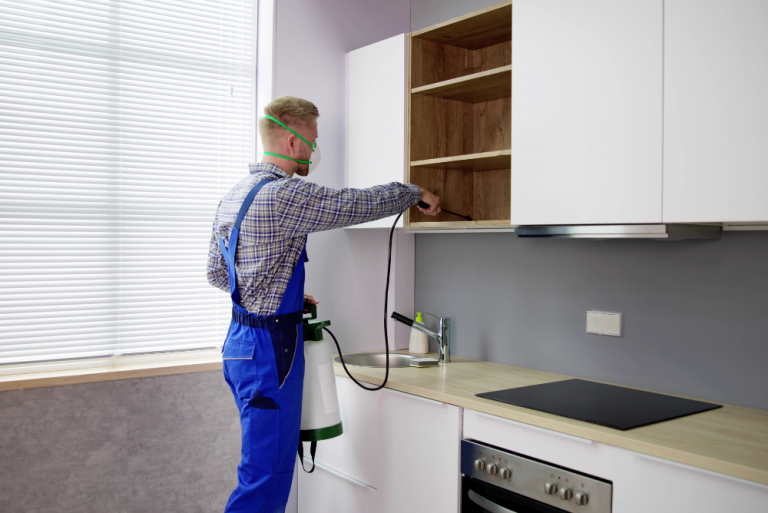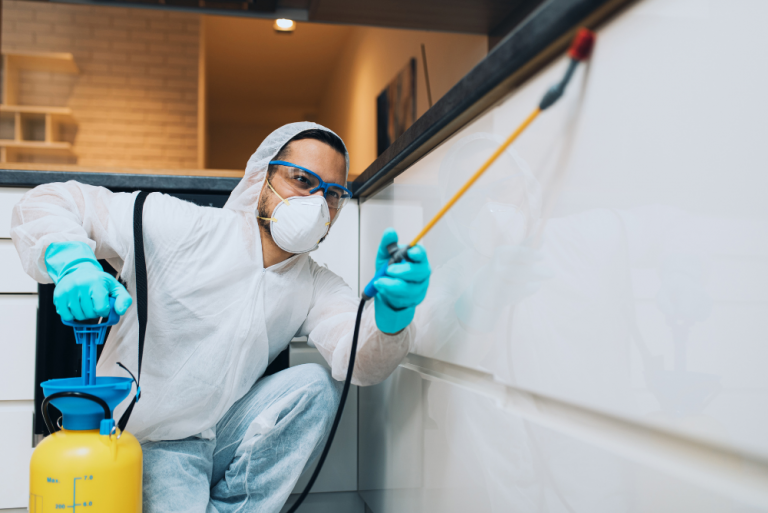If you’ve noticed tiny insects crawling on your walls, you may have booklice. These pests are commonly found in humid environments and can be a nuisance. In this guide, we’ll explain what booklice are, why they appear on walls, and how to get rid of them effectively.
What Are Booklice?
Booklice (Psocoptera) are tiny, wingless insects that thrive in moist and humid conditions. Despite their name, they are not actual lice and do not feed on blood or harm humans. Instead, booklice survive by consuming mold, fungi, and organic materials that accumulate in damp areas. These insects are commonly found in places where humidity levels are high, such as basements, kitchens, bathrooms, and even inside walls.
Booklice are often confused with other small pests like dust mites, but they have distinct physical features that make them easy to identify. Unlike dust mites, which are microscopic, booklice are visible to the naked eye and can be spotted crawling on walls, books, and furniture. Although they are not dangerous, their presence can be a sign of excessive moisture, which may lead to mold growth and structural damage over time.
What Do Booklice Look Like?

Booklice are incredibly small insects, making them difficult to detect unless you look closely. Below are some of their key physical characteristics:
- Size: Typically range from 1 to 2 millimeters in length
- Color: Pale white, gray, or light brown
- Body Shape: Soft-bodied with a segmented appearance
- Wings: Most species are wingless, though some may have tiny wings that do not enable flight
- Legs & Movement: They have six legs and move quickly across surfaces like walls, ceilings, and bookshelves
Booklice are often mistaken for bed bugs or termites, but they do not cause the same level of damage. Unlike termites, booklice do not consume wood, and unlike bed bugs, they do not bite or feed on human blood. Their primary interest is mold, fungi, and organic debris found in humid environments.
Where Are Booklice Commonly Found?

Booklice are drawn to areas with high moisture and poor ventilation. Some of the most common places they inhabit include:
- Walls and Ceilings: Especially in damp or poorly ventilated rooms
- Bookshelves and Paper Products: Their name originates from their tendency to infest books, where they feed on mold found on pages
- Damp Furniture and Cabinets: Wooden furniture and cabinets in humid rooms can attract booklice
- Bathrooms and Kitchens: These areas often have high humidity levels, making them an ideal environment for booklice
- Stored Food Items: They can occasionally be found in improperly stored grains and cereals due to mold growth
Are Booklice Harmful?
Booklice do not pose a direct health risk to humans or pets, as they do not bite, sting, or transmit diseases. However, their presence can be a nuisance and indicate underlying moisture problems. Here’s how they can indirectly affect your living space:
- Damage to Books and Paper Items: Booklice feed on mold and fungi found in old books, wallpaper, and cardboard boxes, potentially leading to deterioration over time.
- Mold Growth Indicator: Since booklice thrive in humid conditions, their presence often signals excessive moisture, which can encourage mold and mildew formation.
- Potential Contamination of Stored Food: In rare cases, booklice may infest improperly stored grains, flour, and cereal, though they do not spread diseases.
How to Identify a Booklice Infestation?
If you suspect a booklice infestation in your home, look for the following signs:
- Tiny, fast-moving insects on walls, books, and furniture
- Damp areas with mold growth or musty smells
- Tiny white or brown specks near bookshelves and storage spaces
Booklice are most active in humid conditions, so infestations are more common during warm and wet seasons. If left unchecked, they can multiply quickly, making it essential to control humidity and clean affected areas promptly.
Why Do Booklice Appear on Walls?

Booklice are small, elusive insects that are commonly found on walls in homes and buildings where there are favorable conditions for them to thrive. These conditions typically involve moisture, poor ventilation, and mold growth. Let’s explore in more detail why these pests choose to infest walls.
- High Humidity
Booklice thrive in environments where the humidity levels are high, typically above 50%. Humidity provides the moisture that booklice need to survive. High humidity can be a result of various factors, including weather conditions, damp materials, and lack of adequate ventilation. Bathrooms and basements are particularly vulnerable due to their naturally high moisture levels. In homes, poor ventilation in areas like attics or behind walls can trap moisture, creating a perfect breeding ground for booklice. When these insects find a humid environment, they not only stay there but also multiply rapidly, leading to an infestation. If you notice booklice on your walls, it’s a sign that moisture is present, and it’s time to address the humidity levels. - Mold and Mildew Growth
Mold is a primary food source for booklice, and they are particularly attracted to walls that harbor mold or mildew. When walls are exposed to excess moisture, such as condensation buildup or water leaks, mold and mildew can form. Booklice feed on the mold spores, which are abundant in areas where moisture lingers. In poorly ventilated rooms or areas where water leaks into the walls, booklice can easily infest these spaces, as mold provides them with the necessary nutrients for survival. This is why it is essential to keep mold growth under control, as it not only affects the structure of your home but also attracts these pests. - Damp or Peeling Wallpaper
Another reason booklice are commonly found on walls is because of damp or peeling wallpaper. Wallpaper, especially when glued to the wall, can retain moisture, creating an ideal environment for booklice to thrive. When wallpaper begins to peel due to the presence of moisture, it can create pockets of space behind the peeling material that serve as hiding spots for the insects. These areas can also harbor mold, which further attracts booklice. Booklice often find refuge in these hidden areas, where they can feed and reproduce without being disturbed. To prevent this, it’s important to ensure that your walls are dry and that any peeling wallpaper is replaced or repaired promptly. - Poor Air Circulation
Air circulation plays a crucial role in regulating humidity and moisture levels within a space. When a room has poor air circulation, moisture is unable to evaporate efficiently, leading to an increase in humidity. This stagnant air allows moisture to accumulate on walls and other surfaces, which in turn creates an environment that is attractive to booklice. Areas that are poorly ventilated, such as storage rooms or closets, often experience higher humidity levels, making them more prone to booklice infestations. To prevent this, it is important to ensure proper airflow by opening windows, using exhaust fans, and regularly circulating air within rooms. - Storage of Damp Items
Storing items like books, paper, and cardboard boxes against damp walls is another reason why booklice appear on walls. Damp items attract booklice, as the moisture in these materials provides them with a food source. In particular, books, which are often stored near walls, can be a prime target for booklice. They feed on the mold that may develop on the pages of old or improperly stored books. Cardboard boxes and paper products can also absorb moisture from damp walls, encouraging booklice to infest these items. To avoid attracting booklice, it’s essential to store books and paper products in well-ventilated, dry areas. Avoid storing such items directly against walls where moisture may accumulate.
Addressing the Issue of Booklice Infestations
If booklice are found on your walls, it’s crucial to tackle the root causes of their presence. Reducing humidity and moisture, eliminating mold, and improving airflow can go a long way in preventing infestations. Taking action to address the environmental factors that attract booklice will not only help you eliminate these pests but also prevent them from returning. By understanding the reasons why booklice appear on walls, you can take the necessary steps to maintain a dry, well-ventilated living space that is less hospitable to these pests.
How to Get Rid of Booklice on Walls
If you have booklice on your walls, follow these steps to remove them:
1. Reduce Humidity Levels
- Use a dehumidifier to keep indoor humidity below 50%.
- Open windows and use exhaust fans to improve airflow.
2. Eliminate Mold and Mildew
- Clean affected walls with a vinegar and water solution to kill mold.
- Use antifungal sprays to prevent mold from coming back.
3. Vacuum and Wipe Down Walls
- Use a vacuum cleaner to remove booklice from walls.
- Wipe walls with a damp cloth and mild detergent to remove mold and organic residue.
4. Use Silica Gel or Moisture Absorbers
- Place silica gel packs in damp areas to absorb excess moisture.
- Charcoal or baking soda can also help reduce humidity.
5. Fix Leaks and Improve Ventilation
- Repair any leaks in pipes or ceilings.
- Keep furniture a few inches away from walls to allow air circulation.
6. Store Books and Paper Properly
- Keep books and paper items in dry, well-ventilated areas.
- Use airtight containers for food storage to prevent infestations.
7. Apply Natural Repellents
- Diatomaceous earth can be sprinkled along walls to repel booklice.
- Essential oils like tea tree, lavender, or peppermint may help keep them away.
8. Call a Pest Control Expert if Needed
If the infestation persists, hiring a professional pest control service can ensure complete removal.
Preventing Booklice from Returning
To prevent booklice from coming back, follow these tips:
- Keep indoor humidity between 30-50%.
- Regularly clean and dust walls, bookshelves, and storage areas.
- Use moisture-absorbing materials like silica gel or charcoal.
- Fix any leaks and ensure good ventilation.
- Store paper products and food in dry, sealed containers.
- Avoid placing damp items near walls.
FAQs About Booklice on Walls
Yes, if humidity is high, booklice can spread to other areas, especially bookshelves, ceilings, and damp furniture.
With proper humidity control and cleaning, booklice can be eliminated in one to two weeks.
Booklice are usually a sign of high moisture and potential mold growth, which should be addressed to prevent further issues.
Conclusion
While booklice are not harmful to humans, their presence on walls can indicate underlying moisture problems that may lead to mold growth and structural damage over time. By understanding the conditions that attract booklice—such as high humidity, poor ventilation, and mold—homeowners can take preventive measures to keep these pests at bay. Regular cleaning, humidity control, proper ventilation, and the prompt repair of leaks are key steps in eliminating and preventing booklice infestations. By addressing the root causes of moisture and mold, you can create a healthier and more comfortable living environment, free from the nuisance of booklice.



